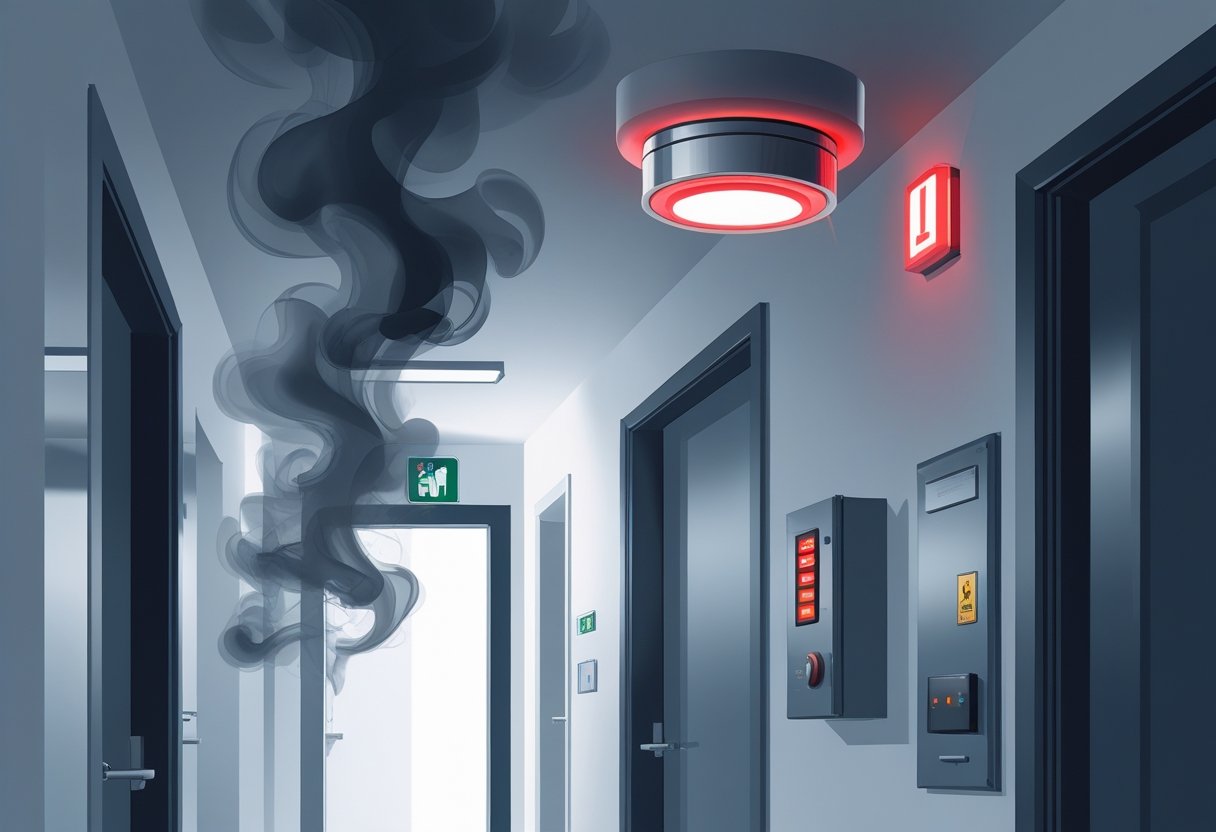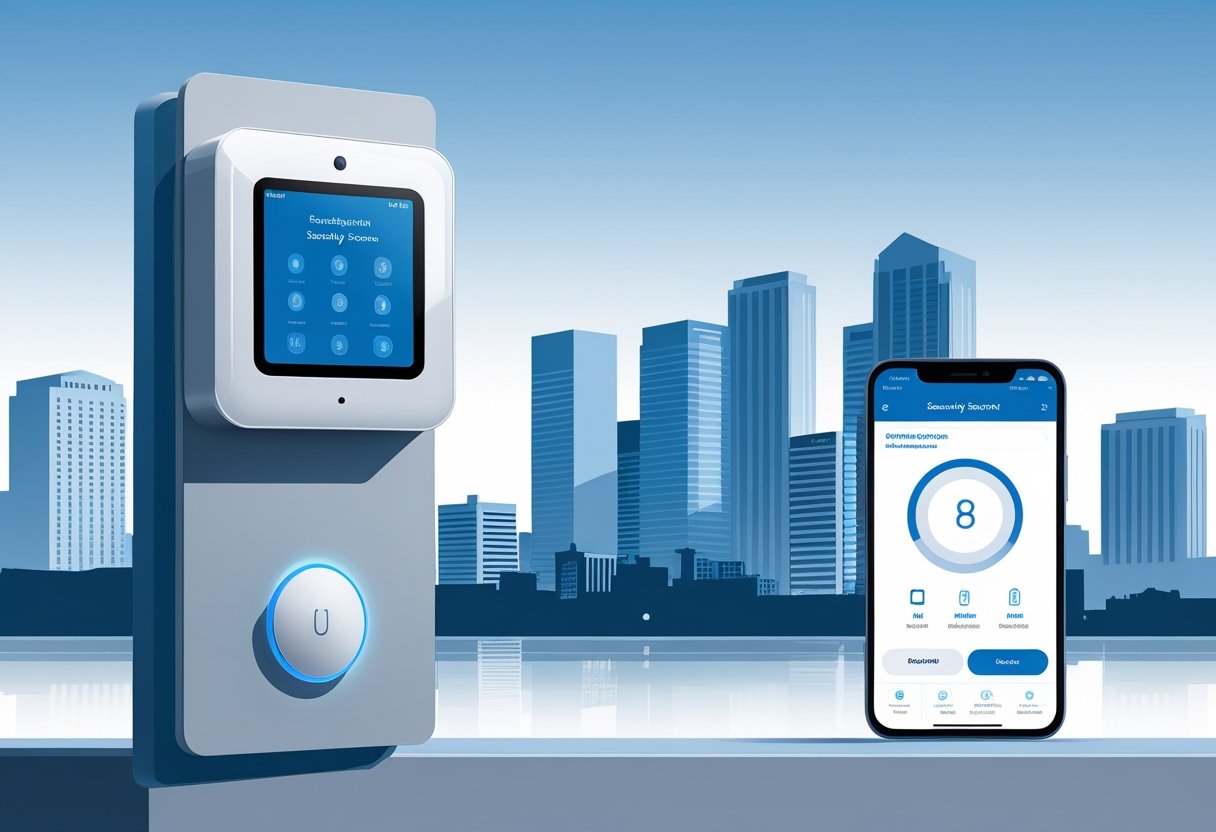When considering the safety of your home or business, understanding the functionality of your fire alarm system is crucial. A fire alarm system does detect smoke, which is essential for providing early warnings in the event of a fire. These systems play a vital role in fire safety, helping to ensure that you and your occupants have the necessary time to respond appropriately.
Smoke detection is a critical component of any fire alarm. Modern fire alarm systems utilize advanced technology to identify smoke particles in the air, alerting you to potential danger before it escalates. By effectively detecting smoke, these systems help safeguard lives and property.
In the greater Houston area, having a reliable fire alarm system in place can significantly enhance your safety measures. Regular maintenance and testing of your smoke detection capabilities are vital in ensuring that your system remains functional and ready to protect you when it matters most.
How Fire Alarm Systems Detect Smoke
Fire alarm systems are essential for ensuring safety by quickly identifying smoke and potential fire hazards. Understanding the mechanisms behind smoke detection will help you appreciate how these systems work and their importance in fire safety.
Principles of Smoke Detection
Smoke detectors operate on specific principles designed to catch the presence of smoke particles in the air. They typically use either ionization or photoelectric methods.
- Ionization Detectors: These contain a small amount of radioactive material that ionizes air, creating charged particles. When smoke enters, it disrupts this ionization process, triggering the alarm.
- Photoelectric Detectors: These use a light source to detect scattered light caused by smoke particles. When smoke enters the detection chamber, it scatters the light, activating the alarm.
Each principle serves a unique role in detecting different types of fires, with photoelectric detectors being more responsive to smoldering fires and ionization detectors being better for fast-flaming fires.
Sensors and Detection Methods
Fire alarm systems incorporate various sensors and detection methods to enhance reliability. Here are common types:
- Smoke Detectors: Fundamental components that identify smoke particles.
- Heat Detectors: These activate based on temperature changes, adding another layer of security.
- Multi-Sensor Detectors: Combining smoke and heat detection maximizes sensitivity and minimizes false alarms.
Modern systems may also integrate air sampling methods where air is continuously drawn into the detection unit for analysis. This enables early detection of smoke particles and provides prompt alerts.
Early Detection and Response
Early detection of smoke is vital in preventing fire disasters. Smoke detectors must be strategically located within your property to ensure optimal coverage.
- Sensor Placement: Install smoke detectors on every level of your home, especially in bedrooms and high-risk areas.
- Routine Maintenance: Regular testing and maintenance of smoke detectors ensure they perform correctly when needed.
In the event of a fire, effective fire alarm systems notify occupants and emergency services, allowing for swift responses to mitigate damage and safeguard lives. With early detection, risks diminish significantly.
Types of Smoke Detectors and Technologies
Understanding the different types of smoke detectors is essential for ensuring your safety. Each type uses distinct technologies to identify smoke and alert you to potential fire hazards.
Ionization Smoke Detectors
Ionization smoke detectors are designed to detect flaming fires that produce small combustion particles. They contain a small amount of radioactive material that ionizes the air, creating a current. When smoke enters the detector, it disrupts this current, triggering the alarm.
These detectors respond quickly to fast-burning fires, like those fueled by paper or wood. However, they can be less effective at detecting smoldering fires, which produce larger smoke particles. Because of this, they are often recommended for areas like kitchens or living rooms, where rapid fire spread may occur.
Photoelectric Smoke Detectors
Photoelectric smoke detectors utilize a light beam and a photoelectric sensor to detect smoke. When smoke particles enter the detection chamber, they scatter the light beam, redirecting it onto the sensor and activating the alarm.
These detectors perform better at sensing slow-burning, smoldering fires, such as those caused by upholstery or electrical appliances. Installing photoelectric detectors in bedrooms and hallways can significantly improve safety, especially during nighttime fires. They're highly effective and tend to reduce false alarms compared to ionization types.
Dual-Sensor Smoke Detectors
Dual-sensor smoke detectors combine both ionization and photoelectric technologies, providing comprehensive coverage against various fire types. By using both methods, these detectors can quickly respond to both fast-burning and smoldering fires.
Having a dual-sensor detector in critical areas of your home increases alarm effectiveness. While they may be more expensive than single-sensor detectors, the added safety benefit is invaluable. They eliminate blind spots that might occur if only one type of detection method is used, addressing the limitations of each technology individually.
Fire Alarm System Design and Components
A well-designed fire alarm system is critical for ensuring safety in your building. The key components work together to detect smoke, alert occupants, and notify emergency services promptly.
Control Panels and Power Supplies
The fire alarm control panel (FACP) is the central hub of your fire alarm system. It receives input from detectors and sensors, processes that information, and then activates notification devices. It can also be programmed for specific responses based on the type of alarm detected.
Reliable power supplies are crucial for the system's functionality. The main power supply ensures constant operation, while backup batteries guarantee performance during power outages. Regular testing and maintenance of both control panels and power supplies ensure optimal operation and compliance with safety codes.
Notification Devices and Sirens
Notification appliances are essential for alerting occupants during an emergency. These can include visual devices, such as strobe lights, and audible alarms like sirens or horns. Each device must be strategically placed to ensure maximum visibility and audibility throughout the building.
Regulations often dictate the intensity and volume of alarms based on building type and layout. Effective notification helps ensure that all occupants receive timely warnings, allowing for safe and efficient evacuation.
Integration with Building Systems
Integrating your fire alarm system with other building systems enhances overall safety and efficiency. For example, linking the fire alarm to the HVAC system can automatically shut down air handling units upon detection of smoke.
This integration prevents smoke from spreading through vents, further protecting occupant safety. Additionally, integrating alarms with security systems allows for streamlined responses and notifications to emergency services, ensuring a faster reaction time during critical incidents.
Proper installation and integration are vital to achieving these benefits, emphasizing the importance of working with experienced professionals in the greater Houston area.
Types of Fire Detectors Beyond Smoke
When considering fire safety, understanding the variety of detection systems available is crucial. Beyond smoke detectors, there are specialized options like heat detectors, flame detectors, and carbon monoxide detectors. Each serves a distinct purpose in enhancing the safety of your environment.
Heat Detectors
Heat detectors respond to changes in temperature, making them ideal in environments where smoke is less likely to be present, such as kitchens or garages. They operate using two primary types: fixed temperature and rate-of-rise detectors.
- Fixed Temperature Detectors: These trigger the alarm when a specific temperature is reached, typically around 135°F (57°C).
- Rate-of-Rise Detectors: These activate when there’s a rapid increase in temperature, indicating the presence of a fire.
Heat detectors are reliable and less prone to false alarms compared to smoke alarms. In areas with high humidity or dust, they're particularly advantageous.
Flame Detectors
Flame detectors are designed to identify the infrared or ultraviolet radiation emitted by flames. They are highly effective for early fire detection in environments where fires can escalate quickly, such as industrial sectors.
- Infrared Detectors: They sense the infrared radiation emitted from flames. Best suited for open spaces, they can detect flames at long ranges.
- Ultraviolet Detectors: These specifically target the UV radiation produced by flames, ideal for high-risk fire environments.
Flame detectors offer rapid detection capabilities and are often used in combination with other fire detection systems for comprehensive coverage.
Carbon Monoxide Detectors
Carbon monoxide (CO) detectors are essential for safety, as this odorless gas can lead to serious health issues. They are particularly important in residential settings, especially where fuel-burning appliances are used.
Most CO detectors will sound an alarm when CO levels reach a dangerous threshold, typically around 70 ppm (parts per million) over a period of time.
Installing CO detectors enhances your safety by offering an additional layer of protection. They can be combined with smoke and heat detectors to ensure a thorough fire safety strategy.
Investing in these various types of detectors helps create a robust fire safety plan tailored to your specific needs.
System Monitoring, Maintenance, and Regulations
Effective fire alarm systems require diligent monitoring, regular maintenance, and adherence to fire codes. Understanding these components is essential to ensure safety and compliance in the greater Houston area.
24/7 Monitoring and Response
Your fire alarm system should be connected to a monitoring center that operates 24/7. This monitoring ensures that any activation of the alarm triggers a prompt response. When smoke or fire is detected, you want immediate notifications sent to emergency services and your designated contacts.
Benefits of 24/7 monitoring:
- Quick response time reduces damage and casualties.
- Peace of mind knowing professionals are always watching.
- Enhanced safety for occupants in your facility.
Fire alarm monitoring services can also integrate with fire suppression systems, such as sprinkler systems, to provide a coordinated emergency response.
Routine Maintenance and False Alarms
Routine maintenance is crucial for ensuring the reliability of your fire alarm system. Regular testing, inspection, and calibration keep all components in good working order. NFPA 72 outlines specific testing intervals, including monthly inspections and annual comprehensive testing.
Dealing with false alarms:
- Mistaken activations can arise from various sources, such as dust accumulation or improper installation.
- Developing a maintenance schedule can significantly reduce these occurrences.
- Training staff on proper alarm usage can further mitigate unnecessary alerts.
Addressing these factors not only improves system reliability but also lowers the risk of ignoring legitimate alarms.
Fire Codes and Regulatory Standards
Your fire alarm system must comply with local fire codes and regulatory standards applicable in the greater Houston area. The 2018 International Fire Code provides guidance on necessary system features and operational protocols.
Key aspects to consider include:
- Accessibility for maintenance and inspections.
- Integration with existing fire suppression systems and sprinkler systems.
- Specific requirements based on building occupancy types and use, ensuring safety is tailored to your facility's unique needs.
Staying informed about these regulations can help avoid penalties and ensure the safety of your property and its occupants.
Optimizing Fire Alarm System Performance
Effective fire alarm systems are crucial for ensuring safety in your building. Optimizing these systems involves careful selection, implementation of safety measures, and adhering to best practices during installation.
Cost and System Selection
When considering fire alarm systems, you have various options such as conventional, addressable, and wireless fire alarm systems. Conventional systems are generally less expensive and simpler, but may lack advanced features. Addressable systems offer better monitoring, allowing you to identify the exact location of an alarm.
Your budget should consider the total cost of ownership, including installation, maintenance, and the potential costs of fire damage. Investing in high-quality smoke alarms and alarm devices can increase reliability and performance, ultimately saving costs in the long run.
Safety Measures and Evacuation
Prioritizing safety measures is essential for effective fire alarm performance. Ensure that your smoke alarms are strategically placed in key areas, including hallways and rooms. Incorporate clearly marked evacuation routes that everyone in your building can easily follow.
You should also conduct regular fire drills to familiarize occupants with the evacuation process. Integration of your fire alarm system with emergency lighting and sprinkler systems enhances safety and improves response times during emergencies. Regularly check your systems to guarantee operational efficiency.
Installation Best Practices
Proper installation is critical for optimal fire alarm performance. Follow the latest NFPA guidelines and local regulations to ensure compliance. Whether you opt for a conventional or addressable system, ensure it is installed by certified professionals experienced in your local codes, particularly for the greater Houston area.
Consideration for environmental factors is vital; smoke alarms should not be installed too close to cooking appliances to avoid false alarms. Ensure that your fire alarm system is easily accessible for maintenance checks and upgrades. Following these best practices enhances the reliability and functionality of your fire alarm system.
Frequently Asked Questions
In this section, you’ll find detailed answers to common inquiries about smoke detection and fire alarm systems. Understanding these components can help you make informed decisions about fire safety in your environment.
How do different types of smoke detectors work?
Smoke detectors operate primarily through two technologies: ionization and photoelectric. Ionization smoke detectors use a small amount of radioactive material to detect smoke particles. Photoelectric smoke detectors utilize a light source and a light sensor to identify smoke through changes in light patterns.
What is the working principle of a smoke detector?
A smoke detector senses smoke by interpreting environmental changes. When smoke enters the detector, it interferes with the light beam or ionization process. This triggers an alarm, alerting you to the potential danger of a fire.
How does a fire alarm system respond to smoke?
When smoke is detected, the fire alarm system initiates a series of responses. This includes activating local alarms and notifying monitoring services. The system can also alert emergency personnel, ensuring a rapid response to potential fires.
What are the differences between fire alarms and smoke detectors regarding insurance?
Insurance policies often distinguish between fire alarms and smoke detectors. Fire alarms are typically monitored systems connected to emergency services, which may lead to lower premiums. Smoke detectors, being standalone devices, may not provide the same benefits for policyholders.
Can a smoke detector be considered a computational device?
Yes, a smoke detector can be viewed as a basic computational device. It processes environmental data, such as smoke density, through its detection mechanisms to determine when to activate the alarm.
What is the function of photoelectric smoke detectors?
Photoelectric smoke detectors excel at detecting smoldering fires, which produce large smoke particles. They use light scattering to identify smoke presence, providing quicker alerts in such scenarios. This makes them particularly effective for residential and commercial fire safety.
.svg)



.svg)


.svg)



